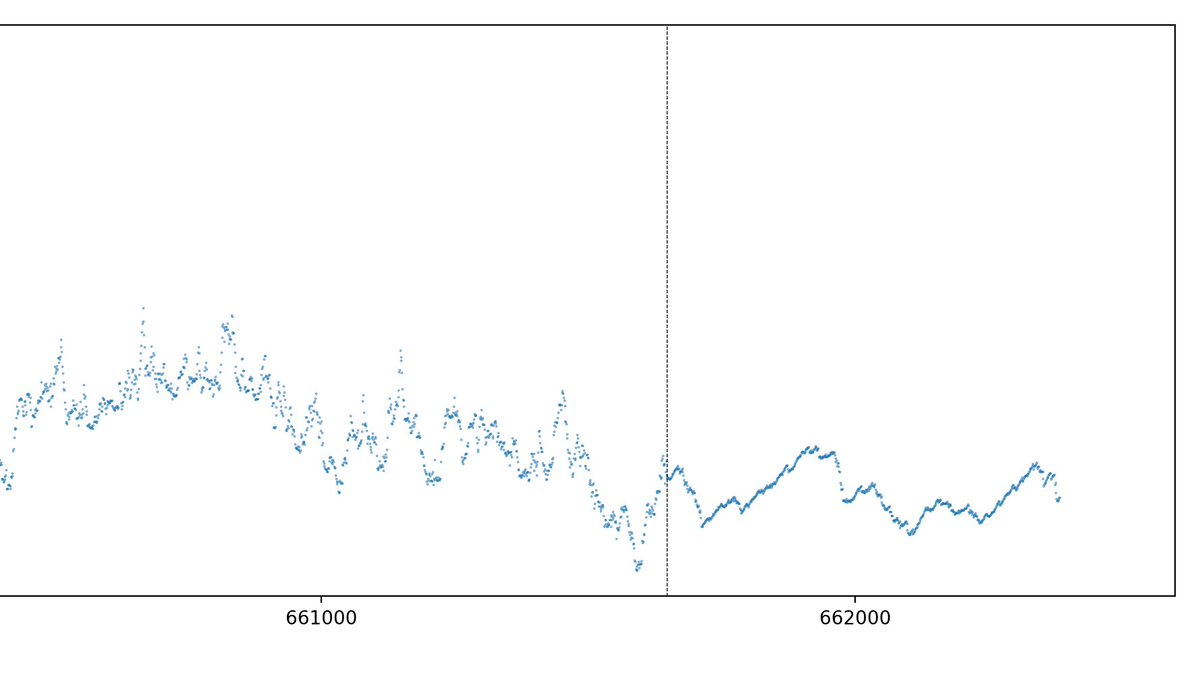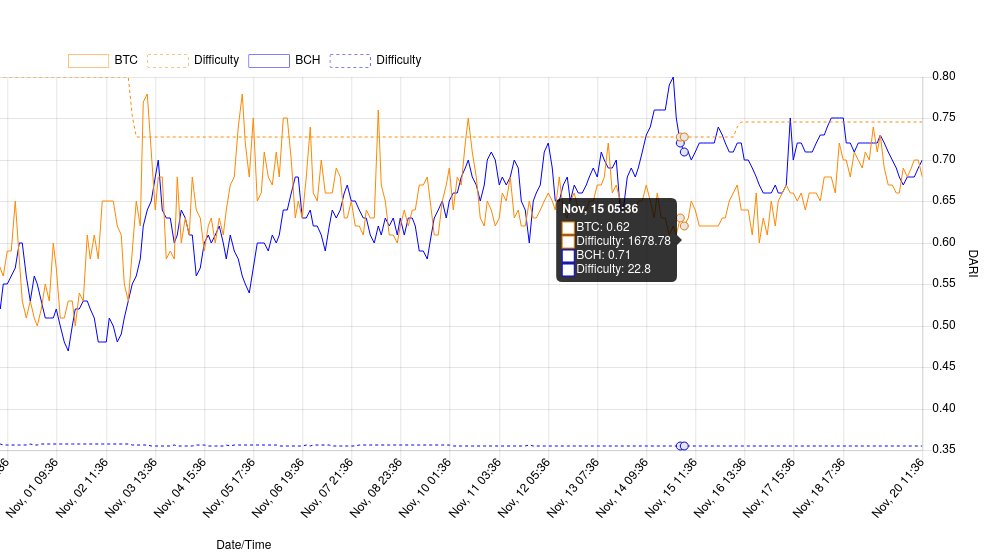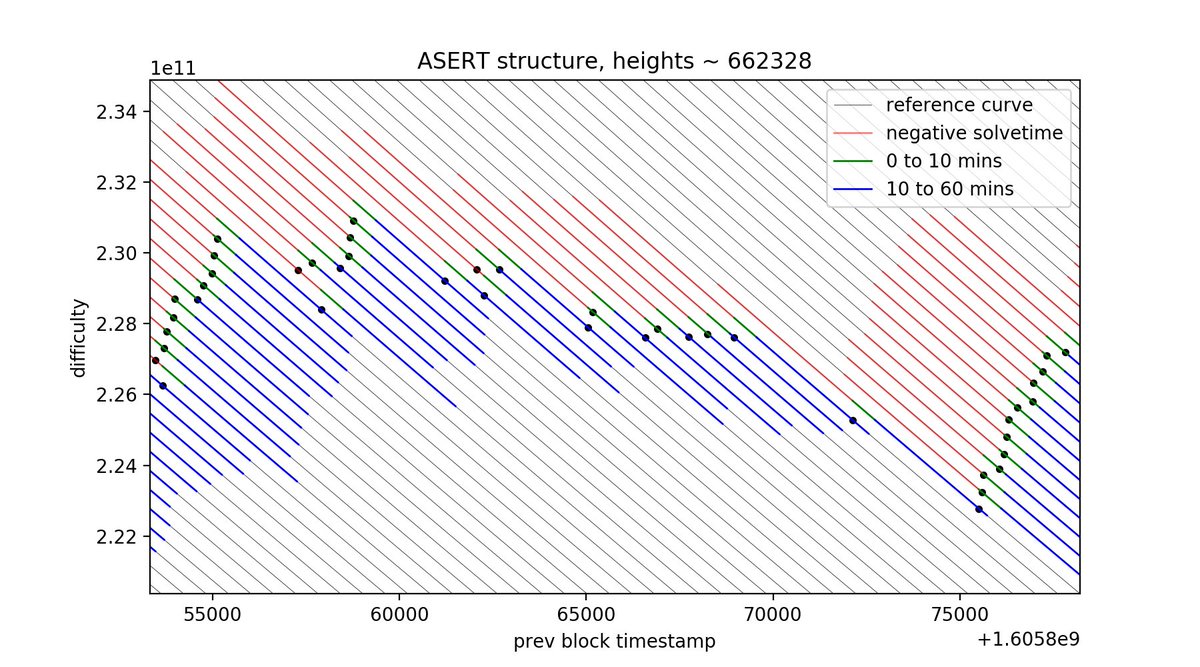Bitcoin Cash's new difficulty algorithm (ASERT) has been active for a several days. Let's take a look at it in action!
As can be seen in previous tweet's graph, the difficulty movements have smoothed out considerably. This is partly due to the longer response time (~2x slower) but partly also due to the removal of the previous moving-average ringing phenomenon, and calming of hashrate swings.
Per https://fork.lol/reward/dari/btc , we can see that BCH was actually under-mined for a few days after the upgrade (people mining BCH made extra profit vs BTC):
As can be seen on the graph, it seems things are setting down towards proper matched profitability. Much of the motivation for new DAA was to modify incentives for various mining strategies, and so it will be fascinating to see what miners do over the coming weeks and months.
On a more technical level, this shows the weird mathematical structure of ASERT: each block's difficulty lies on an prescribed ('absolutely scheduled') exponential curve depending only on height and prev block's timestamp. (note the -ve solvetimes on #662334 and #662342)
I say 'weird' since it's not at all intuitive that such a rigid-seeming structure can be a flexible and responsive DAA, but it really works out! Extended discussion here: http://toom.im/files/da-asert.pdf
The ABC fork has seen only around 7 blocks per day, so difficulty has been falling. ASERT helps ABC massively since the previous DAA would take hundreds of unprofitable blocks to fall far enough. In a couple more days it should be at a par profitability with other SHA256 coins.

 Read on Twitter
Read on Twitter





